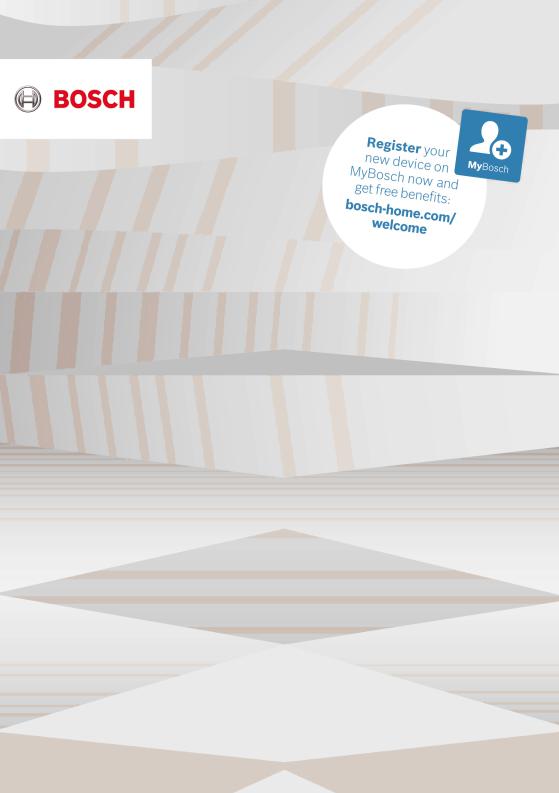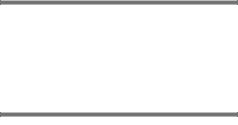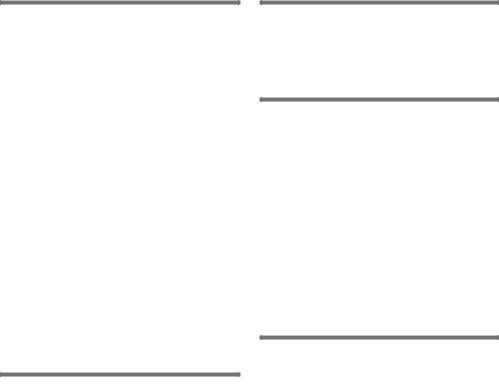Bosch KDN56XW30U, KDN56XIF0N, KDN56XL30M, KDN56XW30M Instructions for Use

Fridge-freezer
KDN..
en |
Instructions for use |
Fridge-freezer |
3 |
tr |
Kullanma kılavuzu |
Soğutma ve dondurma kombinasyonu |
22 |

en Table of contents |
|
Safety and warning information ........... |
3 |
Information concerning disposal ......... |
6 |
Scope of delivery ................................... |
6 |
Installation location ................................ |
7 |
Observe ambient temperature |
|
and ventilation ........................................ |
7 |
Connecting the appliance .................... |
8 |
Getting to know your appliance .......... |
8 |
Switching on the appliance .................. |
9 |
Setting the temperature ...................... |
10 |
Special functions .................................. |
10 |
Alarm function ...................................... |
10 |
Usable capacity .................................... |
11 |
Refrigerator compartment .................. |
11 |
Super cooling ....................................... |
13 |
Freezer compartment .......................... |
13 |
Freezing capacity ................................. |
13 |
Freezing and storing food .................. |
13 |
Freezing fresh food ............................. |
13 |
Super freezing ...................................... |
14 |
Thawing frozen food ............................ |
15 |
Interior fittings ....................................... |
15 |
Sticker “OK” .......................................... |
16 |
Switching off and disconnecting |
|
the appliance ........................................ |
16 |
Cleaning the appliance ....................... |
17 |
Light (LED) ............................................ |
17 |
Tips for saving energy ........................ |
18 |
Operating noises ................................. |
18 |
Eliminating minor faults yourself ....... |
19 |
Appliance self-test ............................... |
21 |
Customer service ................................. |
21 |
tr İçindekiler |
|
Güvenlik ve ikaz bilgileri ..................... |
22 |
Giderme bilgileri ................................... |
25 |
Teslimat kapsamı ................................. |
26 |
Cihazın kurulacağı yer ......................... |
27 |
Mekan sıcaklığına ve havalandırmaya |
|
dikkat edilmelidir .................................. |
27 |
Cihazın elektrik şebekesine |
|
bağlanması ............................................ |
28 |
Cihaz özelliklerinin öğrenilmesi ......... |
28 |
Cihazın açılması ................................... |
29 |
Sıcaklık derecesinin ayarlanması ...... |
30 |
Özel fonksiyonlar .................................. |
30 |
Alarm fonksiyonu ................................. |
30 |
Kullanılabilen hacim ............................. |
31 |
Soğutucu bölmesi ................................ |
31 |
Süper soğutma ..................................... |
33 |
Dondurucu bölmesi ............................. |
33 |
Dondurma kapasitesi .......................... |
33 |
Besinlerin dondurulması |
|
ve depolanması .................................... |
33 |
Taze besinlerin dondurulması ........... |
33 |
Süper dondurma .................................. |
35 |
Dondurulmuş besinlerin buzunun |
|
çözülmesi .............................................. |
35 |
Dolap ...................................................... |
35 |
Çıkartma "OK" ...................................... |
36 |
Cihazın kapatılması, cihazın tamamen |
|
kapatılması ............................................ |
36 |
Cihazın temizlenmesi .......................... |
37 |
Aydınlatma (LED) ................................. |
38 |
Enerji tasarrufu ..................................... |
38 |
Çalışma sesleri ..................................... |
39 |
Basit hataları kendiniz |
|
giderebilirsiniz ....................................... |
40 |
Cihazın kendini test etmesi ................ |
42 |
Müşteri hizmetleri ................................. |
42 |

Safety and warning information
Before you switch ON the appliance
Please read the operating and installation instructions carefully! They contain important information on how to install, use and maintain the appliance.
The manufacturer is not liable if you fail to comply with the instructions and warnings. Retain all documents for subsequent use or for the next owner.
Technical safety
Fire hazard
The tubes of the refrigeration circuit convey a small quantity of an environmentally friendly but flammable refrigerant (R600a). It does not damage the ozone layer and does not increase the greenhouse effect. If refrigerant escapes, it may injure your eyes or ignite.
en
If damage has occurred
■Keep naked flames and/or ignition sources away from the appliance,
■thoroughly ventilate the room for several minutes,
■switch off the appliance and pull out the mains plug,
■inform customer service.
The more refrigerant an appliance contains, the larger the room must be in which the appliance is situated. Leaking refrigerant can form a flammable gas-air mixture in rooms which are too small. The room must be at least 1 m³ per 8 g of refrigerant. The amount of refrigerant in your appliance is indicated on the
rating plate inside the appliance.
When installing the appliance, ensure that the mains cable is not trapped or damaged.
If the power cord of this appliance is damaged, it must be replaced by the manufacturer, Customer Service or a similarly qualified person. Improper installations and repairs may put the user at considerable risk.
3

en
Repairs may be performed by the manufacturer, customer service or a similarly qualified person only.
Only original parts supplied by the manufacturer may be used. The manufacturer guarantees that only these parts satisfy the safety requirements.
Do not use multiple sockets, extension leads or adapters.
Fire hazard
Portable multiple outlets or power supplies may overheat, causing a fire.
Never leave portable multiple outlets or portable power supplies behind the appliance.
Important information when using the appliance
■Never use electrical appliances inside the appliance (e.g. heaters, electric ice makers, etc.). Risk of explosion!
■Never defrost or clean the appliance with a steam cleaner! The steam may penetrate electrical parts and cause a short-circuit. Risk of electric shock!
■Do not use additional means to accelerate the defrosting process other than those recommended by the manufacturer. Risk of explosion!
■Do not use pointed or sharpedged implements to remove frost or layers of ice. You might damage the refrigerant tubes.Leaking refrigerant may cause eye injuries or ignite.
■Do not store products which contain flammable propellant (e.g. spray cans) or explosive substances in the appliance. Risk of explosion!
■Do not stand on or lean heavily against the base of the appliance, drawers, doors, etc.
■For defrosting and cleaning, pull out the mains plug or switch off the fuse. Do not pull out the mains plug by tugging on the power cord.
■Store high-percentage alcohol tightly sealed and in an upright position.
■Keep plastic parts and the door seal free of oil and grease. Otherwise, plastic parts and the door seal will become porous.
■Never cover or block the ventilation openings of the appliance.
4
■Avoiding placing children and vulnerable people at risk:
At risk here are children, people who have limited physical, mental or sensory abilities, as well as people who have inadequate knowledge concerning safe operation of the appliance.
Check that children and vulnerable people have understood the hazards.
A person responsible for safety must supervise or instruct children and vulnerable people who are using the appliance.
Only children aged 8 years and above may use the appliance.
Supervise children while the appliance is being cleaned or maintained.
Never allow children to play with the appliance.
■Do not store bottled or canned liquids (especially carbonated drinks) in the freezer compartment.Bottles and cans may burst!
■Never put frozen food straight from the freezer compartment in your mouth.
Risk of low-temperature burns!
en
■Avoid prolonged touching of frozen food, ice or the evaporator pipes, etc.
Risk of low-temperature burns!
Children in the household
■Keep children away from packaging and its parts. Danger of suffocation from folding cartons and plastic film!
■Do not allow children to play with the appliance!
■If the appliance features a lock:
keep the key out of the reach of children!
General regulations
The appliance is suitable
■for refrigerating and freezing food,
■for making ice.
This appliance is intended for use in the home and the home environment.
The refrigeration circuit has been checked for leaks.
This appliance complies with the relevant safety regulations for electrical appliances and is fitted with noise suppression.
This appliance is intended for use up to a maximum height of 2000 metres above sea level.
5

en
Information concerning disposal
* Disposal of packaging
The packaging protects your appliance from damage during transit. All utilised materials are environmentally safe and recyclable. Please help us by disposing of the packaging in an environmentally friendly manner.
Please ask your dealer or inquire at your local authority about current means of disposal.
* Disposal of your old appliance
Old appliances are not worthless rubbish! Valuable raw materials can be reclaimed by recycling old appliances.
This appliance is labelled in
accordance with European Directive 2012/19/EU concerning used electrical and electronic appliances (waste electrical and electronic equipment - WEEE). The guideline determines the framework for the return and recycling of used appliances as applicable throughout the EU.
m Warning
Redundant appliances
1.Pull out the mains plug.
2.Cut off the power cord and discard with the mains plug.
3.Do not take out the trays and receptacles: children are
therefore prevented from climbing in!
4.Do not allow children to play with the appliance once it has spent its useful life. Danger of suffocation!
Refrigerators contain refrigerant
and gases in the insulation. Refrigerant and gases must be disposed
of professionally. Ensure that tubing
of the refrigerant circuit is not damaged prior to proper disposal.
Scope of delivery
After unpacking all parts, check for any damage in transit.
If you have any complaints, please contact the dealer from whom you purchased the appliance or our customer service.
The delivery consists of the following parts:
■Free-standing appliance
■Interior fittings (depending on model)
■Bag containing installation materials
■Operating instructions
■Installation manual
■Customer service booklet
■Warranty enclosure
■Information on the energy consumption and noises
6

Installation location
A dry, well ventilated room is suitable as an installation location. The installation location should not be exposed to direct sunlight and not placed near a heat source, e.g. a cooker, radiator, etc. If installation next to a heat source is unavoidable, use a suitable insulating plate or observe the following minimum distances from the heat source:
■3 cm to electric or gas cookers.
■30 cm to an oil or coal-fired cooker.
The floor of the installation location must not give way; if required, reinforce floor. If the floor is uneven, compensate with supports.
Distance from wall
When installing the appliance, ensure that the door can be opened by 90°.
Observe ambient temperature and ventilation
Ambient temperature
The appliance is designed for a specific climate class. Depending on the climate class, the appliance can be operated at the following temperatures.
en
The climate class can be found on the rating plate. Fig. -
Climate class |
Permitted ambient |
|
temperature |
SN |
+10 °C to 32 °C |
N |
+16 °C to 32 °C |
ST |
+16 °C to 38 °C |
T |
+16 °C to 43 °C |
Note
The appliance is fully functional within the room temperature limits
of the indicated climatic class. If an appliance of climatic class SN
is operated at colder room temperatures, the appliance will not be damaged up to a temperature of +5 °C.
Ventilation
Fig. #
The air on the rear panel and on the side panels of the appliance heats up. Conduction of the heated air must
not be obstructed. Otherwise,
the refrigerating unit must work harder. This increases power consumption. Therefore: Never cover or block
the ventilation openings!
7

en
Connecting the appliance
After installing the appliance, wait at least 1 hour until the appliance is switched on. During transportation the oil in
the compressor may have flowed into the refrigeration system.
Before switching on the appliance for the first time, clean the interior of
the appliance (see chapter “Cleaning the appliance”).
Electrical connection
The socket must be near the appliance and also freely accessible following installation of the appliance.
m Warning
Risk of electric shock!
If the length of the mains cable is inadequate, never use multiple sockets or extension leads. Instead, please contact Customer Service for alternatives.
The appliance complies with protection class I. Connect the appliance to 220– 240 V/50 Hz alternating current via a correctly installed socket with protective conductor. The socket must be protected by a 10 A to 16 A fuse.
For appliances operated in nonEuropean countries, check whether the indicated voltage and current type match the values of your electricity supply. This information can be found on the rating plate, Fig. -.
m Warning
Never connect the appliance
to electronic energy saver plugs.
Our appliances can be used with mains and sine-controlled inverters. Mainscontrolled inverters are used
for photovoltaic systems which
are connected directly to the national grid. Sine-controlled inverters must be used for isolated applications (e.g. on ships or in mountain lodges) which are not connected directly to the national grid.
Getting to know your appliance
Please fold out the illustrated last page. These operating instructions refer
to several models.
The features of the models may vary. The diagrams may differ.
Fig. !
* Not all models.
AFreezer compartment
BRefrigerator compartment
1–10 Controls
11 Shelf for large bottles
12* Ice maker
13 Light
8

14* Bottle shelf
15Cold storage compartment
16Vegetable container with humidity control
Controls
Fig. "
1Temperature selection button freezer compartment
The button sets the temperature in the freezer compartment.
2Refrigerator compartment temperature selection button
The button sets the temperature in the refrigerator compartment.
3“super” display (freezer
compartment)
Illuminates when super freezing is on.
4Refrigerator section super display
Lights up when super cooling is in operation.
5Temperature display freezer
compartment
The numbers correspond
to the set freezer compartment temperatures in °C.
6lock 3s button
Switches the button lock function on. If this function is switched on, no settings are possible via the controls.
7Button lock function display
This lights up when this function is switched on.
8Temperature display refrigerator
compartment
The numbers correspond to the set refrigerator compartment temperatures in °C.
en
9Display P
This lights up if an alarm is active. This happens if the appliance gets too hot inside.
10“Alarm off” button
This button is used to switch off the warning signal, (see chapter “Alarm function”).
Switching on the appliance
1.First insert the plug into the connection on the back of the appliance. Check that the plug has been inserted all the way.
2.Then insert the other end of the cable into the socket.
The appliance is now switched on and a warning signal sounds.
Press the alarm off button to switch off the audible warning signal.
The 9 display goes out when the appliance has reached the set temperature.
The preset temperatures are reached after several hours. Do not put any food in the appliance beforehand.
The factory has recommended the following temperatures:
■Freezer compartment: -18 °C
■Refrigerator compartment: +4 °C
9

en
Operating tips
■After the appliance has been switched on, it may take several hours until the set temperatures have been reached.
■The fully automatic NoFrost system ensures that the freezer section remains free of ice. Defrosting is no longer required.
■If the door cannot be immediately reopened after it has been closed, wait until the resulting low pressure has equalised.
■The front and side panels
of the housing are partly heated slightly.This prevents condensation from forming.
Freezer
The temperature can be set from -16 °C to -24 °C.
Keep pressing temperature setting button 1 until the required freezer compartment temperature is set.
The value last selected is saved. The set temperature is indicated on temperature display 5.
We recommend a factory setting of -18 °C in the freezer compartment.
Special functions
Fig. "
Setting
the temperature
Refrigerator compartment
The temperature can be set from +2 °C to +8 °C.
Keep pressing temperature setting button 2 until the required refrigerator compartment temperature is set.
The value last selected is saved. The set temperature is indicated on temperature display 8.
We recommend a factory setting
of +4 °C in the refrigerator compartment.
Perishable food should not be stored above +4 °C.
Button lock function
To switch the button lock on and off, press lock 3s button for 3 seconds.
When the function is switched on, the n display lights up.
The control panel is now locked and so protected against unintentional operation.
Alarm function
In the following cases an alarm may be actuated.
Door alarm
If the appliance is left open for a while, the door alarm (interval tone) switches on and the temperature display of the compartment lights up. Close the door or press 10 alarm button to switch the alarm off.
10

Temperature alarm
The temperature alarm switches on if the appliance gets too hot inside and the food is at risk of thawing. An interval tone sounds, the temperature display flashes and the 9 display lights up.
A temperature alarm may occur in these situations:
■Starting up the appliance for the first time
Do not store any food until the appliance has reached the set temperature.
■Storing large quantities of fresh food in the appliance
Switch on super freezing before storing large quantities of fresh food. Avoid contact between fresh food and food that is already frozen.
■Appliance door is open for a very long time
Check whether food has defrosted at all.Do not refreeze food after it has defrosted, even if just partially.
■the appliance is being heated by a second refrigerator (side-by-side installation) or another heat source
Call customer service and ask about ways of insulating your appliance.
Note
Do not refreeze thawing or thawed food. Only ready meals (boiled or fried) may be refrozen.
No longer store the frozen produce for the max. storage period.
Switching off the alarm
Fig. "
Press the alarm button 10 to switch off the warning signal.
en
Usable capacity
Information on the usable capacity can be found inside your appliance on
the rating plate. Fig. -
Refrigerator compartment
The refrigerator compartment is the ideal storage location for meat, sausage, fish, dairy products, eggs, ready meals
and pastries.
Storing food
■Store fresh, undamaged food. The quality and freshness will then
be retained for longer.
■In the case of ready-made products and bottled goods, observe the bestbefore date or use-by date specified by the manufacturer.
■To retain aroma, colour
and freshness, pack or cover food well before placing in the appliance. This will prevent the transfer
of flavours and the discolouration of plastic parts in the refrigerator compartment.
■Allow warm food and drinks to cool down before placing in the appliance.
Note
Do not block air outlet openings with food, otherwise the air circulation will be impaired. Food which is stored directly in front of the air outlet openings may be frozen by the cold air flowing out.
11
en
Note the chill zones in the refrigerator compartment
The air circulation in the refrigerator compartment creates different chill zones:
■The coldest zones are in front of the air outlet openings and in the chill compartment, Fig. !/15.
Note
Store perishable food (e.g. fish, sausage, meat) in the coldest zones.
■Warmest zone is at the very top of the door.
Note
Store e.g. hard cheese and butter in the warmest zone. The aroma of hard cheese can then continue to develop and butter remains spreadable.
Vegetable container with humidity control
Fig. '
To create the optimum storage climate for fruit and vegetables, you can set the humidity level in the vegetable container:
■Mainly vegetables as well as for a mixed or small load – high air humidity
■Mainly fruit as well as for a large load
– low air humidity
Notes
■Fruit sensitive to cold (e.g. pineapple, banana, papaya and citrus fruit) and vegetables sensitive to cold (e.g. aubergines, cucumbers, zucchini, peppers, tomatoes and potatoes) should be stored outside
the refrigerator at temperatures of approx. +8 °C to +12 °C for
optimum preservation of quality and flavour.
■Condensation may form in the vegetable container depending on the type and quantity of products stored. Remove condensation with a dry cloth and adjust air humidity in the vegetable container with the humidity controller.
Cold storage compartment
Fig. (
The cold storage compartment has lower temperatures than the refrigerator compartment. Even temperatures below 0 °C may occur.
Ideal for storing fish, meat and sausage. Not suitable for lettuce and vegetables and produce sensitive to cold.
The temperature of the chill compartments can be varied using the ventilation opening. Push temperature controller upwards to reduce the temperature. Push temperature controller downwards to increase the temperature. Fig. &
12

Super cooling
Super cooling sets the refrigerator temperature to the coldest temperature setting for approx. 6 hours. Then
the appliance automatically switches to the temperature set prior to super cooling mode.
Switch on super cooling mode, e.g.
■before placing large quantities of food in the refrigerator compartment.
■for the fast cooling of drinks.
Switching on and off
Fig. "
Keep pressing the temperature setting button 2 until the super indicator 4 is lit.
Note
When super cooling is switched on, increased operating noises may occur.
Freezer compartment
Use the freezer compartment
■To store deep-frozen food.
■To make ice cubes.
■To freeze food.
Note
Ensure that the freezer compartment door has been closed properly. If the door is open, the frozen food will thaw. The freezer compartment will
become covered in thick ice. Also: waste of energy due to high power consumption!
en
Freezing capacity
Information on the freezing capacity can be found on the rating plate. Fig. -
Freezing and storing food
Purchasing frozen food
■Packaging must not be damaged.
■Use by the ”use by” date.
■Temperature in the supermarket freezer must be -18 °C or lower.
■If possible, transport deep-frozen food in a cool bag and place quickly in the freezer compartment.
Freezing fresh food
Freeze fresh and undamaged food only.
To retain the best possible nutritional value, flavour and colour, vegetables should be blanched before freezing. Aubergines, peppers, zucchini and asparagus do not require blanching.
Literature on freezing and blanching can be found in bookshops.
Note
Keep food which is to be frozen away from food which is already frozen.
13

en
■The following foods are suitable for freezing:
Cakes and pastries, fish and seafood, meat, game, poultry, vegetables, fruit, herbs, eggs without shells, dairy products such as cheese, butter and quark, ready meals and leftovers such as soups, stews, cooked meat and fish, potato dishes, soufflés and desserts.
■The following foods are not suitable for freezing:
Types of vegetables, which are usually consumed raw, such as lettuce or radishes, eggs in shells, grapes, whole apples, pears and peaches, hard-boiled eggs, yoghurt, soured milk, sour cream, crème fraîche and mayonnaise.
Packing frozen food
To prevent food from losing its flavour or drying out, place in airtight containers.
1.Place food in packaging.
2.Remove air.
3.Seal the wrapping.
4.Label packaging with contents and date of freezing.
Suitable packaging:
Cling wrap, tubular film made of polyethylene, aluminium foil, freezer containers.
These products are available from specialist outlets.
Unsuitable packaging:
Wrapping paper, greaseproof paper, cellophane, bin liners and used shopping bags.
Items suitable for sealing packaged food:
Rubber bands, plastic clips, string, coldresistant adhesive tape, etc.
Bags and tubular film made of polyethylene (PE) can be sealed with a film heat sealer.
Shelf life of frozen food
Storage duration depends on the type of food.
At a temperature of -18 °C:
■Fish, sausage, ready meals and cakes and pastries:
up to 6 months
■Cheese, poultry and meat: up to 8 months
■Vegetables and fruit: up to 12 months
Super freezing
Food should be frozen solid as quickly as possible in order to retain vitamins, nutritional value, appearance and flavour.
Several hours before placing fresh food in the freezer compartment, switch on super freezing to prevent an unwanted temperature rise.
As a rule, 4–6 hours is adequate.
This appliance runs constantly
and the freezer compartment drops to a very low temperature.
14

If the max. freezing capacity is to be used, super freezing must be switched on for 24 hours before the fresh produce is placed in the freezer compartment.
Smaller quantities of food (up to 2 kg) can be frozen without “super freezing”.
Note
When super freezing is switched on, increased operating noises may occur.
Switching on and off
Fig. "
Keep pressing the temperature selection button 1 until the Super display 3 is lit.
Super freezing automatically switches off after approx. 2½ days.
Thawing frozen food
Depending on the type and application, select one of the following options:
■at room temperature
■in the refrigerator
■in an electric oven, with/without fan assisted hot-air
■in the microwave
m Caution
Do not refreeze thawing or thawed food. Only ready meals (boiled or fried) may be refrozen.
No longer store the frozen produce for the max. storage period.
en
Interior fittings
Shelves and containers
You can reposition the inner shelves and the containers in the door as required: pull shelf forwards, lower and swivel out to the side. Lift
the container and remove.
Special features
(not all models)
Bottle shelf
Fig. %
Bottles can be stored securely on the bottle shelf.
Ice maker
Fig. +
1.Take out the ice cube tray.
2.Fill the ice cube tray ¾ full with drinking water.
3.Re-insert the ice cube tray.
4.When the ice cubes are frozen, rotate the knob on the ice cube tray several times to the right and release.
The ice cubes loosen and fall into the storage container.
5.Remove the ice cubes from the storage container.
15
